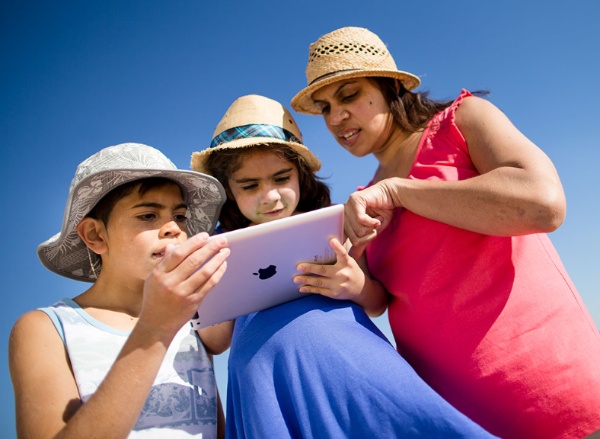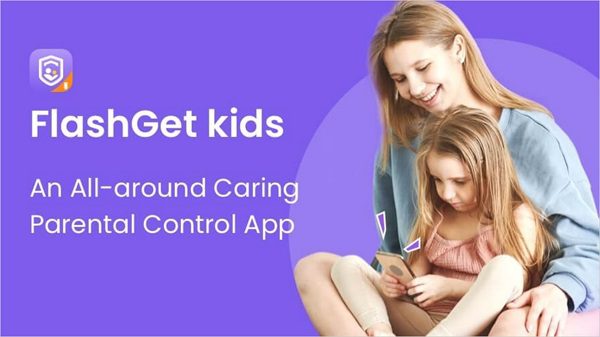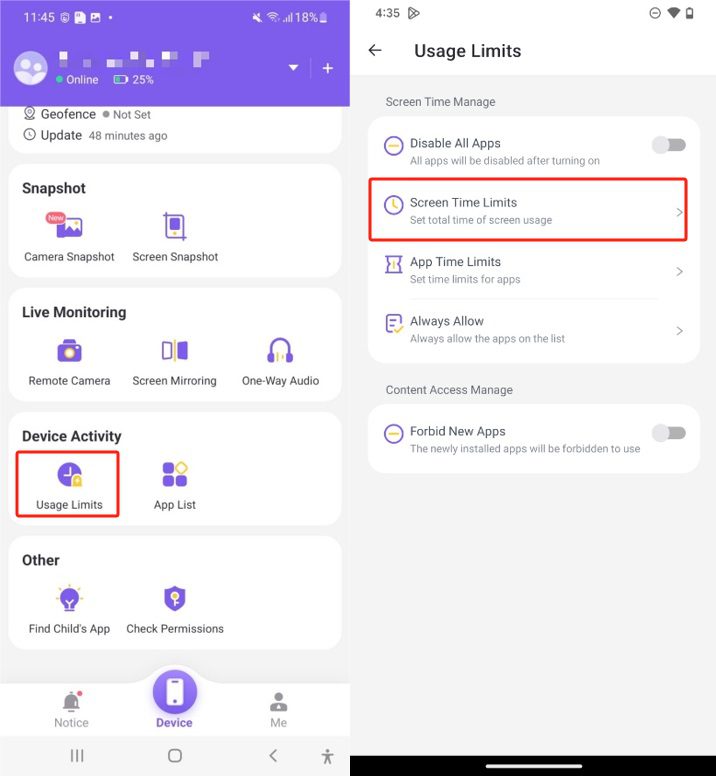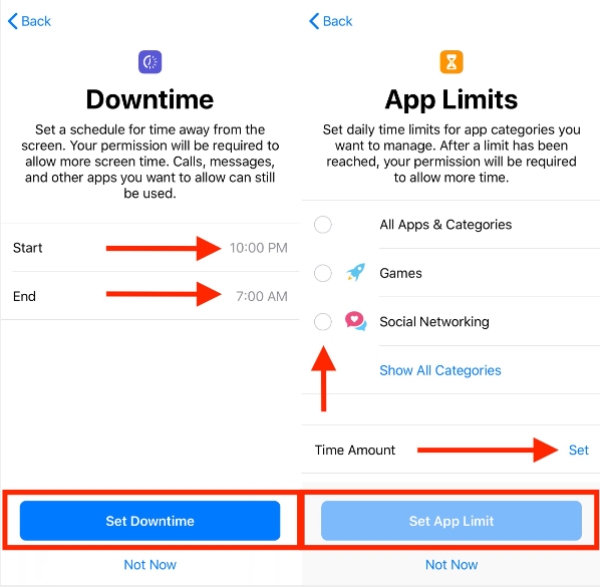Want to know how to control screen time? In the modern age, where everything is connected, our devices continuously fight for our attention, and often, it is even difficult to differentiate between useful and mindless scrolling.
Nevertheless, striving for the equilibrium of technology and human experiences and limiting screen time are also very important for our general well-being.
This article gives concrete ways that you can use to limit screen time and find the balance between both physical and virtual worlds.
The need to control screen time
As the digital age constantly captures our attention, the management of screen time has become an issue that requires much attention.
Studies have revealed a relationship between excess screen time and the occurrence of a number of negative consequences. Thus, it is crucial to establish a balance between them.
Research conducted by the Journal of Child Psychology and Psychiatry revealed that restricting the amount of time children spend on recreational screens improves their psychological health, leading to better sleep quality and improved attention.
Moreover, the American Psychological Association conducted research that found that adults who reduced daily screen time saw improvement in mental health and productivity.
The American Academy of Pediatrics suggests that children between the ages of 2 and 5 should not use screens for more than one hour per day and that consistent limits should apply to older children and adolescents.
Some of the issues associated with children who spend too much time in front of the screens include difficulties with attention, reduced cognitive development, as well as obesity risk.
Implementing screen time parental control should, therefore, be a shared duty of parents. The good news is that both iOS and Android supply features to check children’s gadget habits.
Parents can use Apple Screen Time and Google Family Link to impose time limits and schedules for every kind of device, which lets them bypass the problem of staying on the phone.
Strategies to control screen time for adults
For adults, setting mechanisms to regulate the amount of screen time is an important step for increasing happiness and improving productivity.
Here are some effective tips to help manage digital consumption:
- Set personal screen time limits: Designate particular time frames for the non-work-related screen usage say 1-2 hours a day on social media and entertainment.
- Use apps to monitor and manage screen usage: People can use the app Forest or Space to block apps, observe their screen time, and even establish a break from their digital devices.
- Engage in alternative activities: Explore activities like hobbies, exercises, or social gatherings that don’t require a screen in your hands. Through creative activities, digital users can find a welcome escape from the dullness the many devices give.
- Implement screen-free zones and times: Set aside areas in your home that are screen-free. In addition, arrange for no screen time sessions, e.g. from a certain hour in the evening.
- Practice mindful usage: Don’t let aimless roaming or multitasking decide your course; instead, set your sights on specific actions or endeavors before moving on.
Adults can manage their screen time and reduce harms of excessive digital intake by implementing such strategies, thus working towards better balance and healthier lifestyles.
Strategies for children and teenagers



Parents and guardians should include regulating screen time for children and teens among their responsibilities.
Because of the pervasive use of digital devices and the hurdles of online distractions, it is essential to design sound ways that will help in the development of healthier behaviors.
Here is the role of parents and guardians play in ensuring proper screentime management for your child:
- Set clear guidelines: It is important to create very specific rules and set time limits for a screen time condition based on a child’s age and development stage. Also, they should be involved in the decision-making process to increase awareness and accountability.
- Monitor and supervise: Follow your child’s online activities, what they get into, and the apps or games they play. Be mindful of their screen time, especially with the younger children, to ensure that the content and behavior are appropriate.
- Encourage balance: Inspire your children to have a good balance of screen time with other activities. Help kids develop a variety of interests and hobbies beyond digital devices.
- Educate about digital citizenship: Instruct children about online security, cyber harassment, privacy issues, and digital behavior. Teach them how to behave in the digital space responsibly and thoughtfully.
- Maintain open communication: Create an environment of trust and free communication, where the children can share their internet experiences, positive and negative ones, and set screen time limits as well.
Tips for setting boundaries effectively
To set boundaries and enforce rules effectively, consider the following strategies:
- Create a family media plan: Structure a detailed plan that features approved content, time limits, and maybe screens-less zones or space periods. Involve the whole family in the decision-making process.
- Lead by example: Be the example to follow by cutting off device usage during family time, during meals, and during the most valuable moments.
- Encourage outdoor play and hobbies: Recommend physically active, outdoor adventures, and creative efforts that do not involve a screen. Sign kids up for sports, art lessons, or any other extra-curricular activities.
- Utilize screen time parental control tools: Use the application that Is able to block screen time for children, for parental control. Such services may include but are not limited to setting up time limits, blocking inappropriate content, and tracking online activities.
Tools and resources to control screen time
People and households that try to disciplinarily organize their screen time usage may lean on different tools and resources.
- Parental control software: These applications help parents set limits on their children’s online activities, block unwanted material, and control their children’s screen time.
- Screen time management apps: These apps make it possible for adults and children to have a respite from their screen time, block out unwanted applications, and prevent users from being engrossed in their digital devices.
- Built-in device features: Modern-day operating systems feature preinstalled screen-time controls. Through Apple’s Screen Time and Google’s Family Link, parents are provided with a chance to set usage restrictions, app limits, and content restrictions.
- Online support groups and forums: Forums like parents and online communities help parents to share experiences, ask for advice from each other, and encourage each other online via screen time management resources for both parents and families.
- Educational resources: Blogs, websites, and articles from reliable sources will show you ways to cut down on screen time and live in a balance between the digital and non-digital aspects.
Parental control app recommendation
When it comes to parental control and screen time apps, here are some popular recommendations for Androids:
FlashGet Kids parental control & screen time app: The app enables parents to set time restrictions, block applications, and control devices on their kids’ Android phones.



Qustodio: A comprehensive app that includes screen time monitoring, content blocking, location tracking, as well as other features.
Google Family Link: Google’s parental control service comes by default and lets you set up the app’s use time and bedtime schedule.
For iPhone users, the most popular screen time control apps are:
OurPact: The app will help parents set screen time limits, block apps, create web filters, and track the location of their kids’ mobile devices once they have an iOS operating system.
Apple’s Screen Time: This is an inherent feature that comes as part of iOS that lets you set an app limit, downtime, and content restriction as well as check the time actually spent on the device.
Boomerang: A parental control app that gives you the ability to limit screen-time, location tracking, and content filtering for iOS devices.
These tools and resources allow people to control their own screen time which ultimately lead them to better result related to technology and real-time interaction.
How to limit kids’ screen time with a screen time control app
Even though technology has amazing learning and entertainment opportunities, it doesn’t come without long-term effects in the form of sleep disruption, social development, and even creativity.
This is where screen time control apps come in – strong tools that will allow you to set up healthy boundaries and have a balanced digital lifestyle for your children.
Limit screen time on kid’s Android phone using FlashGet Kids
Giving a break to the screen time on a small child’s Android phone is significant for developing a balanced life and a healthy development.
The FlashGet Kids app, for instance, is an efficient tool that parents can use to achieve this. Here’s how you can limit screen time on your kid’s Android phone using FlashGet Kids:
- Download the FlashGet Kids app for parents on your phone.
- Register a FlashGet account to sign up and use the app. If you already have an account, please sign in to continue.
- Download the FlashGet Kids app for kids on your child’s phone.
- You’ll key in a 9-digit code from the parental control app onto the kid’s phone. Bind the FlashGet Kids parental control app on your phone to the child’s version on your kid’s phone.
- Follow the prompts on your kid’s phone to give the app permission to access other phone features like the camera.
- In the app’s settings on your parent device, go to usage limits, then the “Screen Time” tab. This feature allows you to set a daily time limit for your child’s device usage.
- The app can also allow you to create schedules for when your child can use their device. For example, you can set a “Bedtime” schedule that will lock the device at a specific time every night automatically.



Taking advantage of FlashGet Kids’ features will enable you to restrict and moderate your child’s screen time on their Android device, thereby fostering a benign balance between digital activities and the rest of their life.
Limit screen time on a kid’s iPhone using the screen time feature
Limiting the screen time of a child’s iPhone is made easier with the Screen Time feature from Apple. This powerful instrument enables parents to make suitable boundaries and restrictions on a kid’s gadget utilization.
Here’s how you can limit screen time on your kid’s iPhone using the Screen Time app:



- With your little one’s iPhone in hand, go to Settings. Scroll down and click on Screen Time. Since this is the first time setting up, go for This is My Child’s iPhone.
- For security reasons, you will be challenged to input your Screen Time passcode. Input your code of choice and tap the confirmation button.
- Turn Downtime on, and select either Turn On Downtime Until Tomorrow for instant effect or Schedule to set specific downtime hours per day. In idle time, access will only be possible to pre-approved applications.
- Scroll back to Screen Time and tap on App Limits. Now, you can restrict the amount of time you spend on individual apps on an hourly or per-week basis.
- You might also want to consider Content Restrictions to add a layer of protection. You can do that by blocking or restricting inappropriate websites and in-app purchases, and you can even set access limits to features like FaceTime or Camera.
Final words
Being able to control screen time is a meaningful skill necessary to live a balanced and full life.
This can be achieved via the use of the right techniques, allowing you to regain control over your digital consumption and strengthening your relations and general well-being as well.
The secret lies in carefully developing mindful habits, defining self-bounds, and welcoming such a technique that is compatible with individual values and priorities.
Let us walk together towards a more mindful digital life and discover the life-changing benefits that come with the process of learning how to balance screen time.

